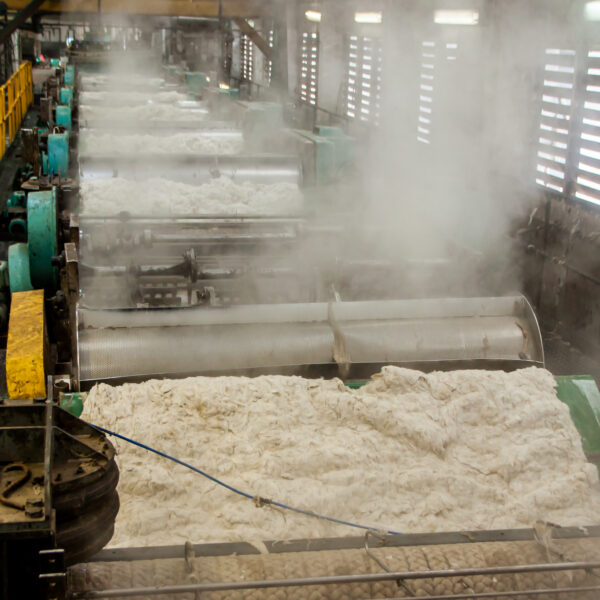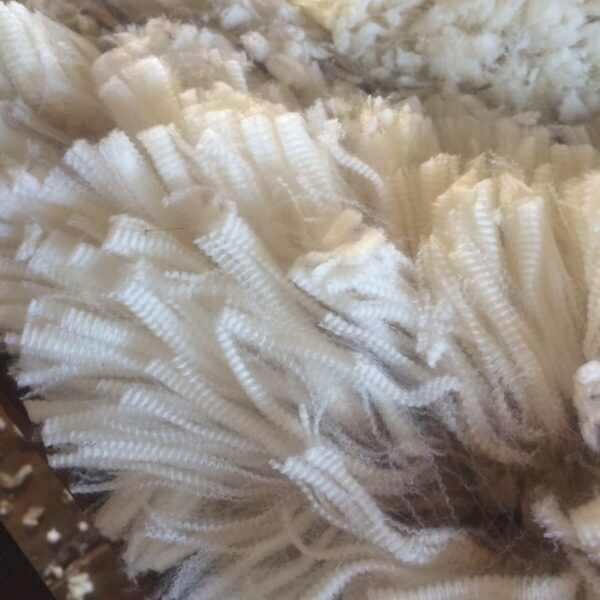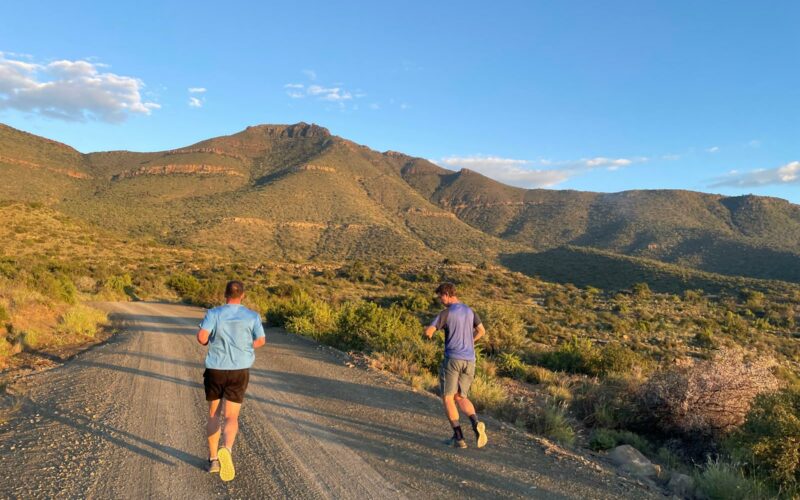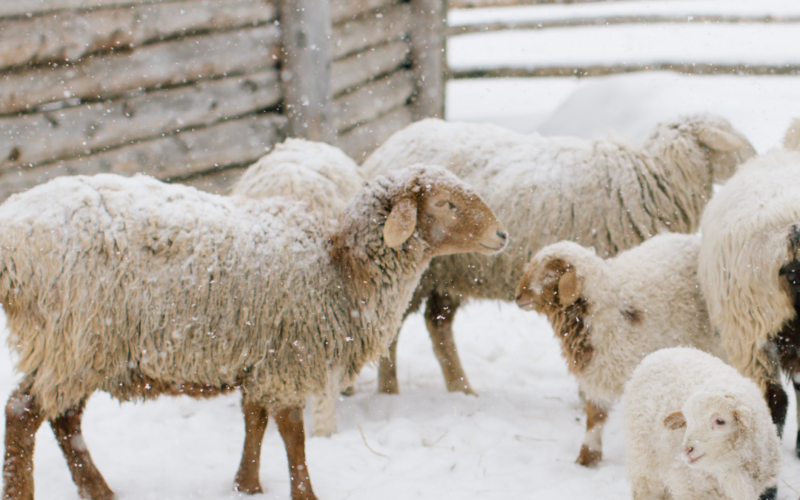Before being transformed into a finished product, wool goes through a succession of stages, each as important as the next. Washing the wool is one of the most important and meticulous stages. During scouring, wool can lose 35% to 65% of its weight!
How is scoured wool obtained?
It all starts with shearing the sheep’s fleece. This is done at least once a year to ensure the health and well-being of the sheep. Before going on to scouring, the wool obtained from shearing is sorted.
This is a very important stage, as it allows the wool to be classified according to its category, quality or colour, for example. The quality of the wool is preserved by careful shearing and sorting. From here begins a long process of transformation, from scouring to carding, to combing, to spinning, and finally to garments or other finished products.


The scouring process
Scouring the raw fibre is a very important stage, as it removes all types of dirt from the wool fibres. The wools selected after sorting are thus rid of all sorts of impurities that can alter the quality of the wool, such as droppings, sand, mud, dirt, etc.
The fleece is also cleaned of its wool grease. Depending on the needs and end uses, the scoured wool can undergo a number of ‘treatments’, such as anti-felting, anti-fire or anti-moth!
Here we go, step by step, through the washing process.
Step 1: warm water and soda ash to start.
Now it’s time to scour the wool! Once the wool has been sorted, it begins its journey in a tub filled with the following mixture: hot or lukewarm water at around 30 degrees and soda ash.
This stage can take several hours to dissolve the fat or ‘grease’ naturally contained in the wool fibres. Lanolin, also known as ‘wool grease’, will change its state on contact with hot water and liquefy, which, with the help of a detergent, will make it easier to remove! Wool grease may need to be treated several times.
Step 2: carbonising.
If, after scouring, pieces of straw or other plant matter are caught in the wool fibres, it will be necessary to go through the carbonising stage. This is carried out using a chemical process which is known as carbonising, it dissolves the plant matter present in the fleece. Alternatively, the plant matter can be removed by hand!
Step 3: Rinsing.
The wool is then rinsed thoroughly in cold water. The water should be completely clear.
Step 4: drying the wool.
Before moving on to the next stage, carding, which untangles and aerates the wool fibres after scouring, the wool must be completely dry!
There are several options: air-drying, which takes much longer, or machine-drying on a specially adapted, very slow programme to avoid damaging or felting the washed wool.
Step 5: storing scoured wool.
Before carding, the scoured wool is stored in a dry place before being used as required.
Once wool scouring done, the wool’s journey is not over! It goes through many other stages, such as carding, combing, spinning, knitting, felting, needling, weaving and even dyeing, depending on requirements and final applications.




